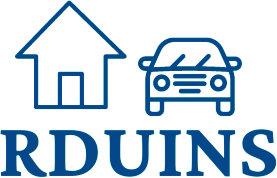Home insurance is a type of property insurance that covers your home, its contents, and your liability for accidents that happen on your property. However, there are some things that home insurance does not cover.
Flood Damage
Home insurance typically does not cover damage caused by flooding. Flooding is a natural disaster that can cause extensive damage to homes and businesses. If you live in a flood-prone area, you will need to purchase flood insurance separately.
Earthquake Damage
Home insurance also typically does not cover damage caused by earthquakes. Earthquakes are another natural disaster that can cause significant damage. If you live in an area that is prone to earthquakes, you will need to purchase earthquake insurance separately.
Mold Damage
Home insurance typically does not cover damage caused by mold, unless the mold is the result of a covered peril, such as a flood or a burst pipe. Mold can grow quickly and cause extensive damage to your home. If you have mold in your home, you should contact a professional mold remediation company to have it removed.
Wear and Tear
Home insurance does not cover damage that is caused by normal wear and tear. This includes things like cracks in the foundation, peeling paint, and fading carpets. These are all things that happen over time and are not the result of a sudden, unexpected event.
Neglect
Home insurance does not cover damage that is caused by neglect. This includes things like leaving a window open during a storm or failing to maintain your roof. If you neglect your home, you are increasing the chances of damage and you may not be covered by your home insurance.
Intentional Damage
Home insurance does not cover damage that is caused intentionally, such as by arson or vandalism. If someone intentionally damages your home, you will need to file a police report and your home insurance may not cover the damage.
Pre-existing Conditions
Home insurance typically does not cover damage that is caused by pre-existing conditions. This means that if your home has a problem, such as a leaky roof, and that problem causes damage, your home insurance may not cover the damage. If you are aware of any pre-existing conditions in your home, you should let your insurance company know so that they can adjust your coverage accordingly.
Some Belongings
Home insurance typically covers your personal belongings, such as furniture, clothing, and electronics. However, there are some belongings that are not covered, such as jewelry, art, and collectibles. These items may be covered by a separate policy, such as a personal property insurance policy.
Conclusion
It is important to read your home insurance policy carefully to understand what is covered and what is not covered. You should also talk to your insurance agent if you have any questions about your coverage. By understanding what is not covered by your home insurance, you can take steps to protect yourself and your belongings in the event of a loss.




